Chevrolet’s first entry in the new compact market in 1960 was the Corvair. But it was unorthodox compared to the growing list of competitors. It had an air-cooled engine mounted in the rear (like the VW Beetle). This 1964 edition is from the last year of the first generation and is a sharp Monza convertible. There is no mention of any outstanding issues, so this should be a drop-top that you can enjoy right away. Located in St. Augustine, Florida (the nation’s oldest city), this Chevy is available here on Facebook Marketplace for $12,900. Barn Finder Steve Clinton is the source of this neat tip!
Early Corvairs came to the attention of safety activist Ralph Nader who wrote about his concerns regarding the car’s handling in his book, Unsafe at Any Speed. Whether these concerns were on the mark or overblown, the PR damage was done, and sales began to decline in 1964. Even after Chevy had improved the rear suspension by adding transverse leaf springs and a front stabilizer bar. That’s a shame because the Corvair was a better car by then and was treated to a larger, 164 cubic inch engine.
The seller’s sweet ’64 Monza is a convertible with nearly 71,000 miles. No mention is made of a prior restoration, but that wouldn’t be surprising. It’s said to be in great shape inside and out, and the body, paint, and interior all agree with that statement. More than 31,000 Monza open-air editions were produced in 1964, with the Monza being a top-tier model.
This should be a fun car to drive with a 4-speed manual transmission and an engine that produced 15 more horses than the previous 1960-63 versions. The seller says the auto has “original parts” but that’s rather vague. Just what parts are original and which ones are replacements after nearly 60 years? If you were going to buy a first-gen Corvair, the ’64 would be the one to buy (from all indications).




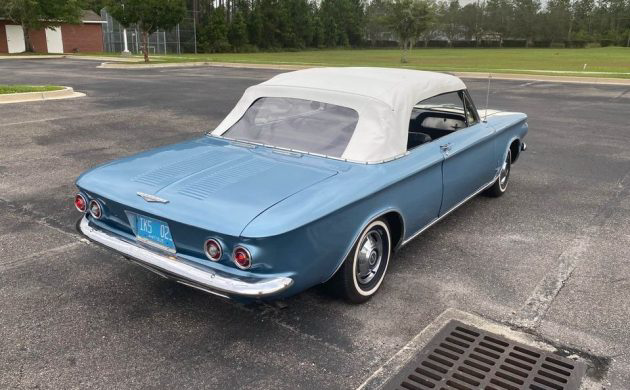

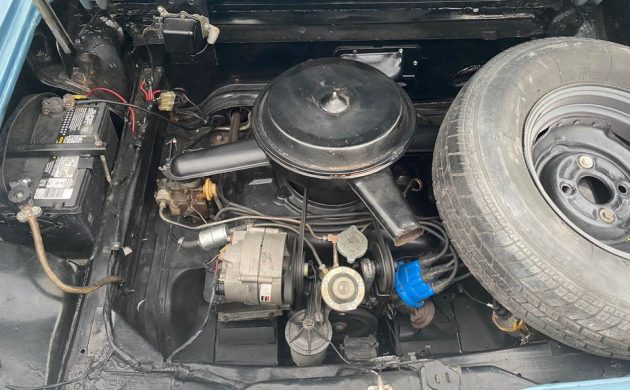
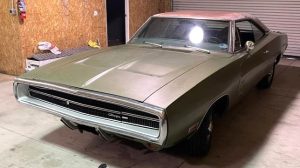
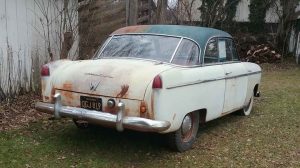
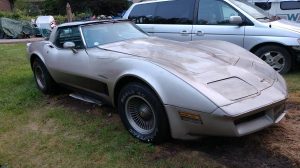




Oh Russ, shame on you for a banner headline referring to that bozo, not unlike exploding Pintos and such. The Corvair was a great car, and Naders shenanigans didn’t deter folks. I read, GM sold almost 1.8 MILLION Corvairs, and with the pickup and van, closer to 2 mil. That’s mighty impressive for a car that was unlike any other to date. Not sure what exactly it was, the air cooled 6, the options, or just the right timing, there’s no question, it was a hit. Naders BS scared some prospective buyers, but most that had any experience with one, knew he was full of it. Okay, 5 figures is still a bit much, but beats the $25 grand MGA, and guess what? Wind in the hair( if any left) is wind in the hair, and good old USA all over it. I bet someone hates to see it go.
I have to agree. That headline perpetuates a myth that should have long ago been shelved by auto journalists :(
I read that in-spite of Nader’s book, the actual insurance stats showed it just as safe as any other car of the same vintage.
3 total in my family and we enjoyed them all. Nice car.
I was a car carrying member of the Corvair club in the 70’s, had three, a 61, 62, and 66. Flipped over 75 cars back then as a teenage kid and drove them all equally stupidly, the two early Corvairs were the only ones that ever did a 360 on me. So Ralph was right, but not about the ’66, which handled like a dream.
The first gen Corvair was under suspended and had tires that were too small. A Nader bashing jabroni spouted the same old line that Corvairs had the same type of suspension as a VW which was not targeted as unsafe. I explained that the Corvair was 50% heavier and had 3 times the power. Second gen Corvairs had much better suspension, but it was too late: everyone who really wanted a Corvair had one and then there was the Ford Mustang. Nader singled out the Corvair but that was not the real target. The industry in general was lax in safety measures. They had to be dragged, kicking & screaming, into things like seat-belts, dual master brakes & side marker lights; a bunch of morons who failed to realize that dead people do not come back to the dealership for another car. Anyhow, my grandma bought one of the last Corvairs. A year or so later she traded it in on a 1970 Monte Carlo.
Your dad should have told you to make sure you had the tires filled to the manufacturer’s specified pressure. Front and rear were different. It made all the difference.
My college roommate’s dad had a used car dealership in Eastern Pa. And every weekend Dave would come back with a different car but the best handing one was a 1965 Corvair Monza coupe. He used to drive us on the cloverleafs. I don’t think I’ve felt a car handle any better.
Preston Tucker wanted a lot of things in his Tucker Torpedo that are pretty common now. Like seatbelts, disc brakes (nobody had them in a car yet)fuel injection and more. But the dumbass executives thought that the seatbelts would make the public think that the cars were unsafe! Really they were looking at how much cost these things would add to the cars.
First rear engine flat 6 before the Corvair. And it was a Franklin Helicopter engine!
My dad was a Chevy and Ford dealer until the mid-70’s.
He gave me a ’64 Corvair they took in trade and made me put four concrete blocks in the front hood for stability.
JUST MAYBE
If you would have had a proper width tire (195/70R/13 when thery were available) And had them properly inflated (26 front, 28 rear) you could have lost the blocks. In fact, most of my riders marveled at the way the light front end would “SKI” up on drifts of snow, but the 425 lb powerplant hung over the rear wheels, pushing right through the drift.
Of course NOT if you tossed 300lbs of blocks in the front. kind of a silly move.
26/28 tire pressure??? Really???? Factory recommendations were 15/26 cold and 18/30 hot. Those recommendations were for bias ply tires, radials you can bump the pressure up a bit. Over-inflation of the front tires contributed to many Corvair accidents and roll overs.
Funny you mention the concrete blocks. My aunt’s friend had an early one. What I do remember is her opening the frunk and there was a sandbag on each side roughly above the front wheels. She said it made it steer better especially in the rain and snow.
Want to see something sobering? Gaze upon that driver-spearing steering column, solid from end to end. Nader was wrong about a lot of things ans he’s been a political PITA, but the broad brush he swung about auto safety had some truth.
Until 1967 my friend. EVERY GM CAR had a “Driver Spearing” steering column.
And it wasn’t just GM!
1965 was the first year for the collapsible steering column in the Corvair. We had a ’65 Corvair. First year for front lap belts, dual circuit brake lines and a padded dashboard. And fully independent rear suspension with coil springs unlike the Corvette with its transverse leaf spring. I had a 1970 Opel Kadett Rallye with a transverse leaf up front!
Back in The Day a required movie in Drivers Ed. was Signal 30, made by the Ohio Highway Patrol. Maybe the oldsters here remember it.
Signal 30 was the OHP sign for a fatal accident.
It was gory, girls fainted and guys puked the death messes.
One thing that stuck with me was how almost every accident with a head-on had the driver impaled on the steering column.
It was hardly just the Corvair.
I saw that movie in 1961 – – – in 10th-grade biology class.
My comment about Corvair steering columns was driven by the number of endswapping oversteer accidents that seemed to plague swingaxle Corvairs.
I wound up owning the champion driver-skewering steering column, Austin-Healy 100-6. Steering box under the driver’s-side headlight with about zero crush space up front. Lethal design. And we didn’t know better.
By 1971, that movie was deemed too graphic, and we never did see it in our Dr. Ed classes. Not too sure about impaling on the steering column, I read, back then, being ejected from the vehicle caused most deaths. Ironically, due to unbuckled occupants, it remains the #1 cause of deaths in traffic accidents today.
Citroen had rack and pinion steering in 1935 in the Traction Avant. The rack was in front of the firewall so behind the engine, not the front axle like most American cars had. My ’85 Jetta has that and a double jointed steering column that folds to compensate in an accident. The American cars were always reluctant to make improvements but restyling every year took precedent for a long time.
Just finished a ’64 turbo Spyder, and a ’66 140 H.P. Spyder, both solid 5 figure cars.
A 1966 140hp Monza or Corsa, right?
Had a 62 corvair convertible into which I installed a Bill Thomas built big bore turbo engine. Put out about 200hp. Higher numerical rear end ratio wasn’t available, so I got some 10″ wheels and Dunlop slicks from a Mini Cooper, had the lug holes welded up and redrilled to match the rear axles…no rear brakes!
Drag race tech was pretty lax back then (1966-7) and the folks at Lakeland dragstrip in Memphis didn’t know what they were looking at. Car should have run C/Gas Supercharged (11.50 et), but instead I ran H/Gas (14.20 et) I could run under the national record any time i wanted to…won some serious mone with it. Took ’em a year to catch on!
Had a ’63 Monza convert. Went into cloverleaf freeway on-ramp too fast and almost hit curb. Turning steering wheel in direction of skid and running it didn’t work. Jammed on brakes and narrowly avoided collision/ damage.
Unsafe at any speed… Watch the YouTube video of them crashing a late 50’s early 60’s Chevrolet into a newer one compared to the crumple zone and other things engineered into today’s cars they were all unsafe. But even with the seatbelts and airbags in cars today people still die in automotive accidents and I don’t see having self driving cars is going to change that in my lifetime. So enjoy this car and all others you like, or ride the bus
My first wife lost 2 brothers in 1969 on their way to church one Sunday morning. A 15 and 16 year old, only boys in the family. They were driving a 64 Corvair, going down a hill on wet pavement, struck a concrete bridge and nearly split the car in half. I always believed what ole’ Ralph stated had some truth to it. I spent several years in the 80’s living through the damage that wreck continued to do to that family. An engineering newbie can look at that weight distribution and see there was a big problem. If not then why the rush by GM to change it??
“If not then why the rush by GM to change it?”
That’s quite similar to the response I used whenever my kid sister’s PITA hubby lambasted Ralph Nader and touted the first generation Corvair as having such great suspension.
Well, if the early rear suspension was so great, why did GM shell out all the $$$ to completely revamp it even after the higher-ups had already given the order to end all development work on the car?
They changed it for even better handling. The early cars handled fine, one reason people were so attracted to them. But the 65 Corvair handled better than Corvettes. And I suspect the 65 design cost less money, since they eliminated more parts.
Not Driving for Conditions? That could have happened to ANY car.
On July 20, 1972 NHTSA wrote this statement: “On this day in 1972, the National Highway Traffic Safety Administration released the results of a two-year study that concluded that Chevrolet’s 1960-63 Corvair models were at least as safe as comparable models of similar cars sold during in the same period. The report contradicted charges lodged by Ralph Nader, a leading consumer advocate.” The majority of the accidental rollovers were caused by spirited driving, failure to maintain recommended tire pressures, and inexperienced drivers. Ralph Nadar did indeed make a contribution to overall safety improvements, kudos for that.
Weight distribution? Just oversteer or over inflation of the tires, like a rear engined Porsche. The rear suspension was supposed to be fully independent in the first place. But leave it to the accountants/bean counters who also left out safety features that were already in some European cars. Mainly SAAB, Volvo, BMW and Mercedes. So it took law suits to get them to do it right.
Again the usual reminder that the Federal Highway Safety Administration completely exonerated the early Corvair by 1972
There are people here that have no idea… thats why I posted it. But thank you for your information packed comments regarding Corvairs!
Well I gotta throw my 2cents in here. I don’t know a lot about Corvairs. I always likes the 2nd gen. better, maybe because of the hardtop styling. I think maybe they were aimed at younger buyers, but the biggest wrinkle in Corvair sales was the Camaro. I’m not sure but I don’t think a six cyl. base Camaro was priced that much more than a Corvair. From the side the lines are almost the same.6cyl Camaros, Mustangs and Barracudas, just the car for a young single secretary or school teacher. And I’m sure many were dad approved rather than something with the motor in the back.
Nader was right about the Corvair’s stale air heater, something that VW got rid of in ’61. Way too easy to get carbon monoxide poisoning from a bad head gasket or leaky exhaust manifold gasket. Otherwise 1st gen’s handled as well as same-year American compacts and much better than rear engine swing axle Renaults, which was the most popular import in the early-60s.
The heater you refer to was an improvement over the gasoline powered “South Wind” heater that came on the early models. I never had any trouble with the heater in mine, and I’d added headers which changed the airflow in the shroud around the exhaust.
If you are going to compare the Corvair to a German car it should be at least to the Porsche.The VW was much smaller in size and speed. VW had 4 Cyl. Corvair had 6 Cyl. VW typically between 40-57 HP, Corvair 110-180 HP.
The Corvair was a decidedly mixed bag. The early models could be dicey if the tire pressure specs weren’t followed to the letter. The retrofit kit, with the transverse leaf spring helped, but the real fix would come in ’65 when the swing axles went away in favor of a full IRS setup, but by then, the damage was done. The fact that the Corvair was the only platform that used a unique engine and transaxle didn’t help the bottom line any. Only the 61-63 Tempest made use of the transaxle by flipping it 180 degrees and bolting it to John Z. DeLorean’s famous “rope drive” driveshaft. Nader’s screed killed sales, and GM couldn’t afford to keep throwing money at a losing proposition, so GM threw in the towel by 1969. The utterly conventional Nova replaced the Corvair, was much cheaper to build, and sold like hotcakes. Consumers had been scared away from innovation, and GM paid the price.
GM gets points for trying to be innovative, but like so many GM innovations of the 1950’s and ’60’s, the execution was flawed, and that flawed execution set back progress in the American auto industry by decades. The “Big Three” then became terribly risk averse, and spent twenty years fighting Federal rules on pollution controls and fuel economy in court, putting themselves even further behind the foreign completion from Eurasia. If the Big Three had spent all the money they spent on lawyers fighting the “Gubmint” in court on engineering instead, they would have been much better positioned to withstand the assault of the imports, but it was not to be. I knew Detroit had fallen far behind when the lowly VW Beetle got IRS and EFI, IRS sometime in the 1960’s and EFI in the 1975 Super Beetle.
The Camaro Replaced the Corvair. Nova had been in the line up since 62.
Any Corvair person knows this. Camaro 1st Gen Rocker Panel trim, Inside door and window handles, outside window handles are the Same Part number for Corvair and CAMARO.
It’s amazing how people write on the Corvair and get stuff wrong.
the 65-69 Corvairs were NOT supposed to be made.
The only reason they were was Ed Cole, Former Chevy division COO who became CEO of GM. He helped with the flat diesel tank engine and the Chevy Small block, and is well known as the “Father of the Corvair”.
Ed wasn’t going to toss in the towel when the bean counters wanted him to.
And since he was at the top of the company, things went on. So we got hundreds of thousands more Corvairs.
I’ll accept what you say, but I would like to point out that the Corvair debuted in 1960 (the year my baby brother was born), but the Nova didn’t appear until 1962 (initially as the Chevy II). While both were sold as compacts, I would argue that the Corvair was not only more expensive to build, it was outsold by the Chevy II/Nova, especially when the sedan, station wagon and pickup truck versions of the Corvair are removed from the mix. The panel van and wagon were gone by 1964, and the pickup truck died in 1965. The Nova convertible went away in 1966, when the second generation Nova debuted, and the station wagon disappeared a year later, in 1967, when the third generation Nova hit the streets, so direct sales comparisons are difficult, but I would argue that the cost of having two (2) compact cars compete for sales in the same market segment wasn’t going to last long in any case. The Nova finally won because it was cheaper to build, hence more profitable, and building an engine and transaxle that could only be used in one car line was inherently inefficient. As Corvair sales declined, the model that was to be dropped became increasingly clear, and it wouldn’t be the Nova.
The debut of the Ford Mustang also cut into Corvair sales, and forced the debut of the F-Body twins in 1967, the Camaro and Firebird, to compete, which was the final straw that broke the Corvair’s back, and got it cancelled.
IRS for the Beetle appeared in 1969.
Thanks for the update, most appreciated.
I know of one where the guy stuffed a 350 v8 in one, still drives it.
Crown made a kit for the V8 conversion. Seen a couple, cooling was a problem.
“Signal 30” is on youtube, and also “Wheels of Tragedy”
I know it had an impact on me when I got my DL.
Sort of a “Scared Straight” for teen drivers.
The Crown kit came out around 1967 or 1968. They were very primitive in their design, and were often built an a very austere budget using junk yard parts. I have a 1965 Crown conversion, with no cooling system issues so far, around 4 years or so. It uses the original Crown design radiator location, but using a fully sealed “box” that forces the incoming air through a dual pass radiator, shroud and electric fan, and out through the trunk floor. The cooling system also uses an electric water pump, and a cooling system controller that regulates water pump speed based on temperatures. It will turn on the radiator fan when the temp reaches 170 degrees. My car has yet to overheat, but granted, it is a fair weather fun car. There are still quite a few of these conversions running around!
Sounds like you and modern tech have solved the cooling problem! How does it handle? Maybe the weight of radiator and coolant kinda offsets the V8 weight in the rear? Aluminum block would help too i guess, but expensive! The ones I’ve seen (70s-80s) all had cast iron blocks…but we were only interested in going in a straight line, not handling!
The Crown style cars had approximately 40/60 front-rear weight distribution while the original Corvairs were approximately 35/65 front/rear. The V8 engine literally sits right behind the front seats. Straight line performance (drag racing) wasn’t one of their strong points, the stock transaxles weren’t fond of hole shots or power shifting. Set up properly and driven sensibly, they can and do hold up. Many updated cars these days run a C5 Corvette diff setup with a Saginaw trans or a Porsche 930 transaxle. I graduated high school in 1970, and remember the Crown ads in the back of Hot Rod magazine. Always wanted one. It’s just fun to drive and see the expressions on the faces of other drivers/passengers when they see a V8 where the back seat used to be…
Corvair Geezer story:
I got my 62 ‘vert in 64 in my freshman year of college. I’m tall and was on freshman basketball team for a while…until I figured out that “Just tall” ain’t enough! Coach made us run the stairs in the field house to strengthen our legs after practice. This made my legs cramp when I tried to drive home. So I’d put down the top on the Corvair, put a basketball in the driver’s seat to sit on, and looked over the top of the windshield to drive home, letting me keep my legs straight. Pulling away from a stop light in a seedy part of town, somebody threw a rotten banana that hit me right in the face…never figured out who. But after that I waited an hour after practice and drove home with the top up!